Syn.: Phytolacca decandra L.
Family: Phytolaccaceae R. Br.
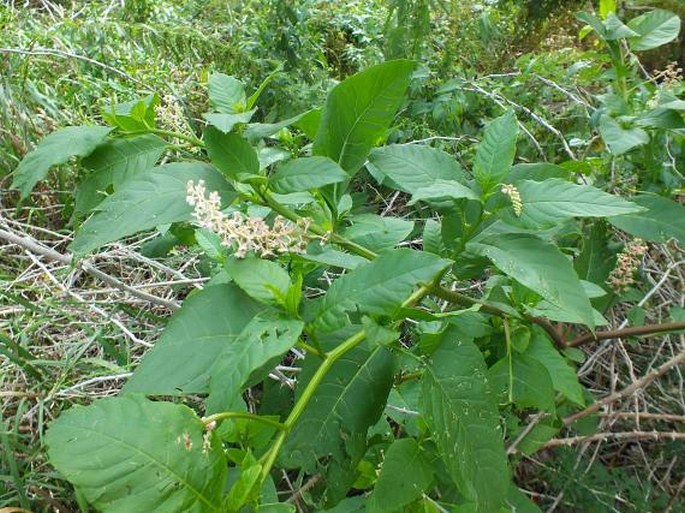
Distribution: North American species found from Ontario and Quebec of Canada, throughout most of the US with exception of 8 north central states of Idaho, Montana, Dakotas, Wyoming, Colorado, Utah and Nevada. It has been introduced to many other areas of the world, including Europe, China, eastern Australia, northern Argentina and Uruguay.
Ecology: In the wild you can find this species in edge habitats of woodlands, but usually in disturbed areas, along the roads and fences as a weed.
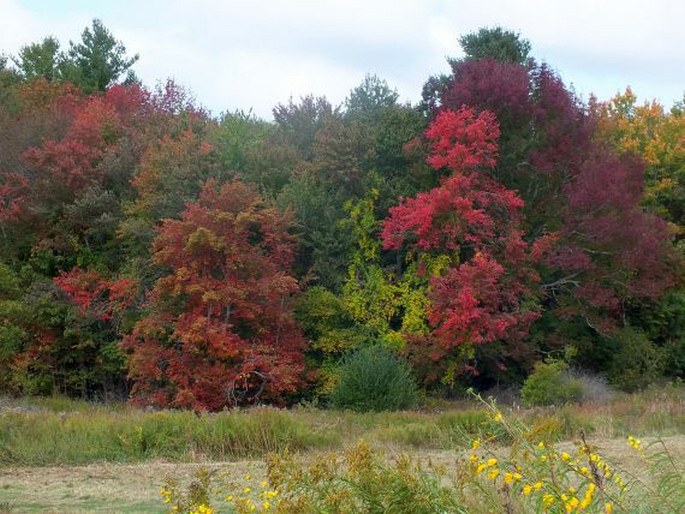
Description: Perennial herb of large size up to 3 m tall or more. Main stems erect, to 2 cm thick, purplish red, branched from axils of leaves, side branches lax to drooping, mostly green. Leaves alternate, petiole 1–6 cm long, lanceolate to ovate, with prominent veins, to 35 × 18 cm. Inflorescence is an open raceme, from the opposite side of the leaf axil, 6–30 cm long, usually drooping, sometimes erect, on a peduncle about 15 cm long; flowers pentamerous, petal-like sepals whitish to pinkish to purplish, ovate to round, 2.5–3.3 mm, pedicels 3–13 mm, stamens usually 10, 6–12 carpels fused in proximal half. Fruit is a berry, purple-black, 6–11 mm across, seeds black, lenticular, 3 mm, shiny.
Note: This species is well known to herbalists, cell biologists and toxicologists. It contains a variety of toxins. Although the berries are consumed by birds and probably by mammals as well, human consumption is not recommended. It has been used as an emetic, a purgative and a suppurative, which gives you a good idea about its consumption. When ingested, the poisoning will induce sweating, burning of digestive system, gastritis, vomiting, diarrhea and sometimes unconsciousness or rarely death.
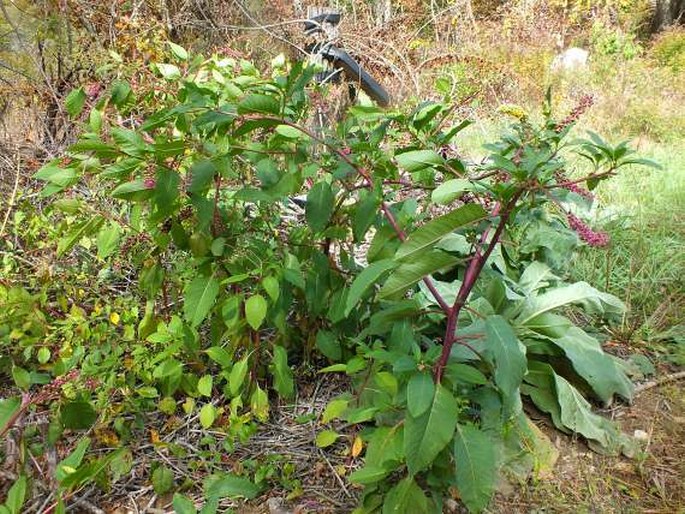
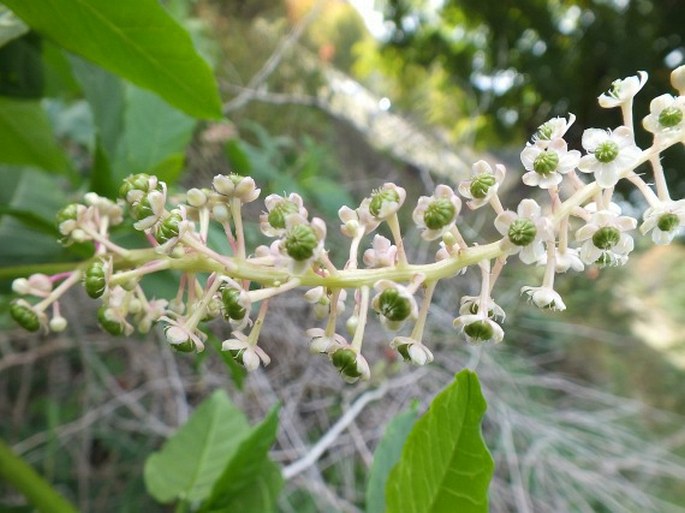
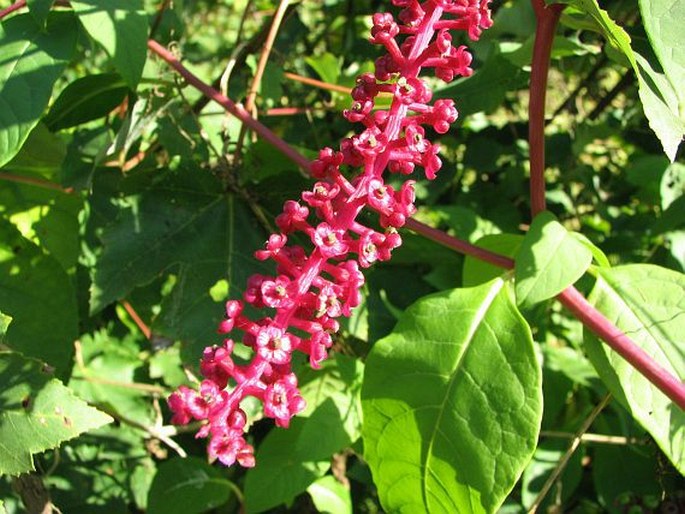
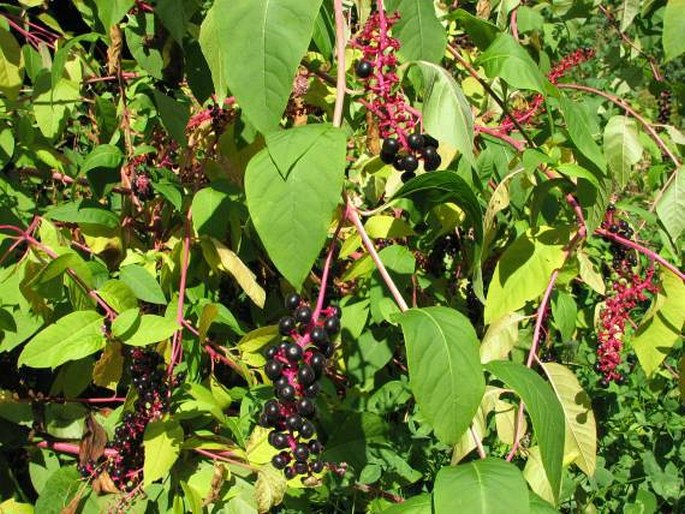
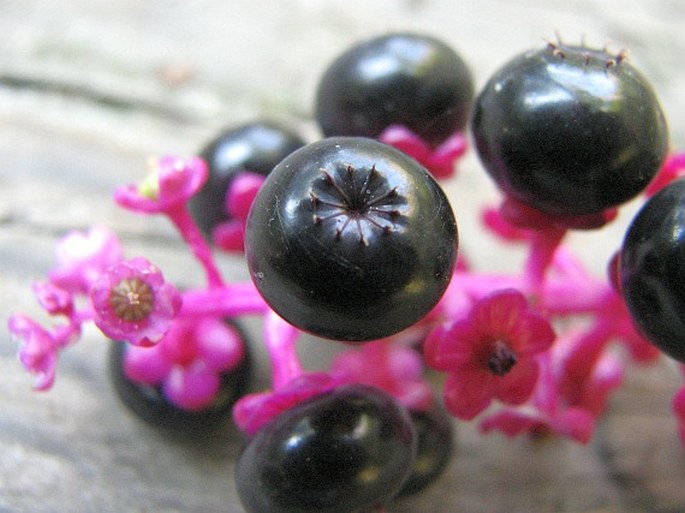
These images were taken in USA, Massachusetts, Amherst (October 4, 2007), and USA, Massachusetts, Worcester (October 4, 2015).


